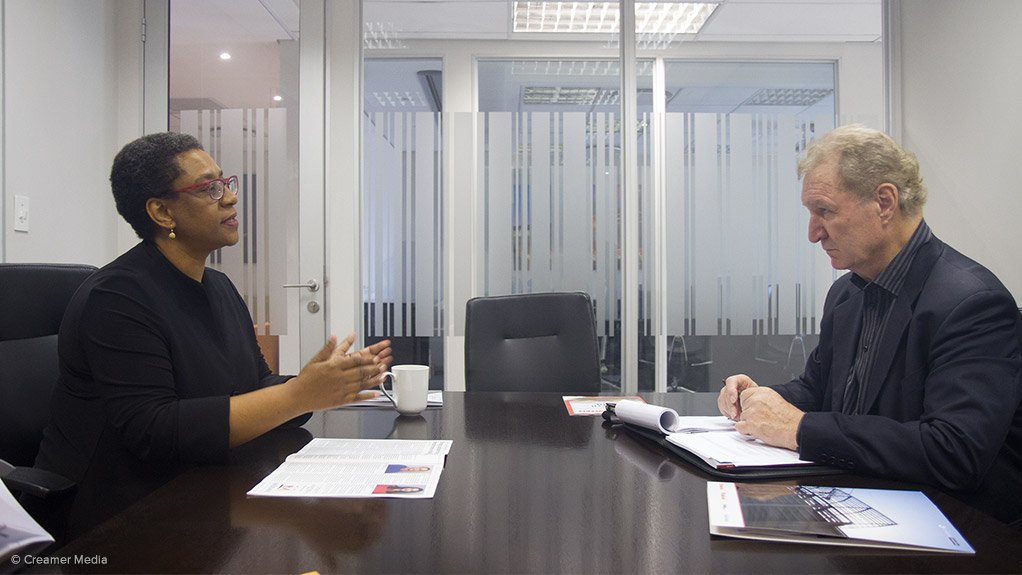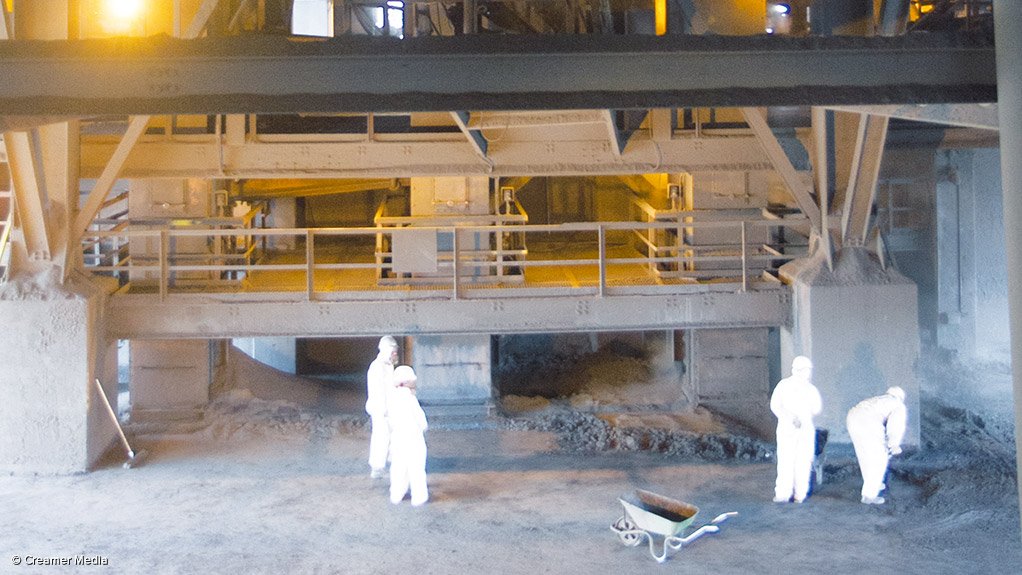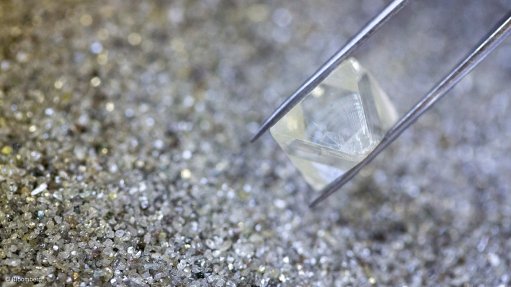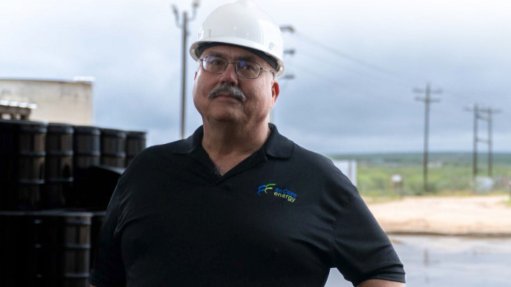Positive prices buoying ferrochrome business – Merafe



Merafe Resources CEO Zanele Matlala in conversation with Mining Weekly Editor Martin Creamer.
Photo by Duane Daws
Lion smelter power costs lower than those of competitors
Photo by Duane Daws
JOHANNESBURG (miningweekly.com) – Ferrochrome prices for the first half of 2017 are providing ongoing momentum for the ferrochrome business, which is poised to benefit from this year’s stainless steel production growth rate forecast of 3.5%.
The demand for ferrochrome is driven overwhelmingly by the production of stainless steel, which in 2018 is projected to grow by an even higher rate of 3.8%.
The latest European benchmark ferrochrome price for the three months to June 30, 2017, has been settled at $1.54/lb, well up on the average of $0.95/lb of 2016 and the $1.07/lb of 2015.
Though slightly lower than the first-quarter price of $1.65c/lb, the second-quarter price settlement continues to indicate a deficit in supply.
Pricing for the first half of this year is positive, Merafe Resources CEO Zanele Matlala commented to Mining Weekly Online during an exclusive interview.
Starting this year, Merafe’s policy is to pay a minimum dividend equal to 30% of yearly headline earnings and then also to declare special additional distributions of remaining cash not required within the business.
The idea is to return as much as possible to shareholders.
JSE-listed Merafe was formed in 2001 and had its own chrome smelter and two chrome mines, which were pooled with those of the former Xstrata in July 2004 to form the Glencore-Merafe Chrome Venture, the largest ferrochrome producer in the world, which operates eight chromite mines and 22 ferrochrome furnaces.
The way the Glencore-Merafe Chrome Venture works is that both parties retain ownership of the assets that each contributed to the venture, which uses those assets to generate the earnings before interest, taxes, depreciation and amortisation (Ebitda) that are shared in the ratio of 79.5% Glencore to 20.5% Merafe.
“Our partner, Glencore, markets our products efficiently, adds value logistically and gets good prices,” said Matlala, who heads a company that employs six people at its head office and pays 20.5% of the salaries of the venture’s 13 000-plus employees.
Eighty-seven per cent of its board members are black, 62% of its board members are women and 71% of its employees are black.
In the 12 months to December 31, 2016, Merafe’s share of the venture’s Ebitda was R1 176.2-million, 38% higher than in 2015.
Glencore has a 29% shareholding in Merafe and South Africa’s State-owned Industrial Development Corporation a 22% shareholding.
The rest of the shareholding is in free float, 41% of it in South Africa and the remaining 8% offshore.
In the past 18 months, the Merafe share has become far more liquid owing to investment management companies and institutions showing increasing interest in the share, which has been trading at prices well below the 190c a share. The analyst consensus on the share is currently between 179c to 300c a share.
STRONG INVESTMENT CASE
Merafe has a strong investment case that centres on factors such as its strong cash-flow generation, its secure long-term supply of ore reserves, its partnership with the global leader of chrome-ore and ferrochrome marketing, and its energy efficient technology that makes Merafe the lowest-cost producer in South Africa and the second-lowest cost producer in the world.
Cost containment and cost reduction are the major pursuits of both the Glencore-Merafe Chrome Venture and the Merafe head office, where corporate costs fell to R30.2-million in 2016 compared with R34-million in 2015.
Chrome ore, electricity and reductants are the main cost contributors. The cost of chrome ore is driven mainly by labour, with wages being negotiated by labour unions.
The cost of electricity, which has been a major factor in the past, is no longer as big a concern, exemplified by the National Energy Regulator granting electricity utility Eskom a tariff increase from April 1, of 2.2%, the lowest for some time.
Because of the use of Premus technology at the Lion II smelter, a key competitive advantage is that the venture’s power costs are lower than those of its competitors.
Had the Lion operation not installed the Premus technology, it would have needed an additional 1 776 MWh to produce the same volume of ferrochrome.
Reductant costs have also been declining. The Lion smelter also uses considerably less coke and more locally produced, lower-cost anthracite and char than conventional smelters.
Efficiency is increased through pelletising to cope with increasing volumes of fine chrome ore, with the pelletised material put through prereduction kilns that radically reduce furnace time and, thus, electricity consumption.
The exchange rate of the rand against the dollar is a significant factor because most of the Merafe product is sold in dollars, making the conversion to rand important.
The exchange rate prevailing at the time of going to press was similar to the 2016 average exchange rate of R14.70 to the dollar.
DEBT REDUCTION
Ranking after cost management on the priority list is debt reduction. In early 2017, Merafe debt was reduced to R226-million, the planned elimination of which in the next two years will position Merafe to take advantage of opportunities that may arise and augment dividend payouts.
When the company was investing heavily in large new cost-reducing projects in past years, there were more moderate dividend prospects for share investors than is the case now that the company is harvesting the fruits of all those investments and has fewer demands on its cash.
Throughout the lengthy period of capital project funding, Merafe at no stage resorted to the raising of equity capital and in the main funded most the capital programme from cash flow.
The large Lion II smelter project was funded largely from cash flow and some debt, which has been substantially repaid, as have is capital contributions to the Bokamoso and Tswelopele pelletising and sintering plants, the upper group two plants and the Wonderkop acquisition.
Last year’s ferrochrome revenue and chrome ore revenue were the highest ever.
Merafe reported a 61% year-on-year increase in chrome ore revenue on 38% higher chrome ore sales volumes to 372 000 t and 7% higher chrome ore prices.
The record production of 393 000 t in 2016 was only at about 82% of installed capacity and the company’s latest guidance to the market is that production at a level of 85% of installed capacity of 2.339-million tonnes is achievable in 2017, taking into account the maintenance carried out during the winter months when power is more expensive.
The record level of sales of 437 000 t in 2016, which included selling from stock, will not be repeated in 2017.
The company recorded its highest profit in 2008, when ferrochrome prices soared to $2/lb. With excess electricity
supply now available, incentivised rates may well be negotiated for the winter months for additional use of electricity.
Merafe’s attributable ferrochrome production from the Glencore-Merafe Chrome Venture for the first quarter of 2017 increased by 10% to 113 000 t compared to the comparative period. This increase was primarily attributable to improved performances and efficiencies across Venture’s furnaces, coupled with the restarting of Rustenburg furnace 5 in the second half of 2016. Merafe will hold its next annual general meeting on May 4 and present its interim results for the first six months of 2017 on August 7.
Comments
Press Office
Announcements
What's On
Subscribe to improve your user experience...
Option 1 (equivalent of R125 a month):
Receive a weekly copy of Creamer Media's Engineering News & Mining Weekly magazine
(print copy for those in South Africa and e-magazine for those outside of South Africa)
Receive daily email newsletters
Access to full search results
Access archive of magazine back copies
Access to Projects in Progress
Access to ONE Research Report of your choice in PDF format
Option 2 (equivalent of R375 a month):
All benefits from Option 1
PLUS
Access to Creamer Media's Research Channel Africa for ALL Research Reports, in PDF format, on various industrial and mining sectors
including Electricity; Water; Energy Transition; Hydrogen; Roads, Rail and Ports; Coal; Gold; Platinum; Battery Metals; etc.
Already a subscriber?
Forgotten your password?
Receive weekly copy of Creamer Media's Engineering News & Mining Weekly magazine (print copy for those in South Africa and e-magazine for those outside of South Africa)
➕
Recieve daily email newsletters
➕
Access to full search results
➕
Access archive of magazine back copies
➕
Access to Projects in Progress
➕
Access to ONE Research Report of your choice in PDF format
RESEARCH CHANNEL AFRICA
R4500 (equivalent of R375 a month)
SUBSCRIBEAll benefits from Option 1
➕
Access to Creamer Media's Research Channel Africa for ALL Research Reports on various industrial and mining sectors, in PDF format, including on:
Electricity
➕
Water
➕
Energy Transition
➕
Hydrogen
➕
Roads, Rail and Ports
➕
Coal
➕
Gold
➕
Platinum
➕
Battery Metals
➕
etc.
Receive all benefits from Option 1 or Option 2 delivered to numerous people at your company
➕
Multiple User names and Passwords for simultaneous log-ins
➕
Intranet integration access to all in your organisation




















